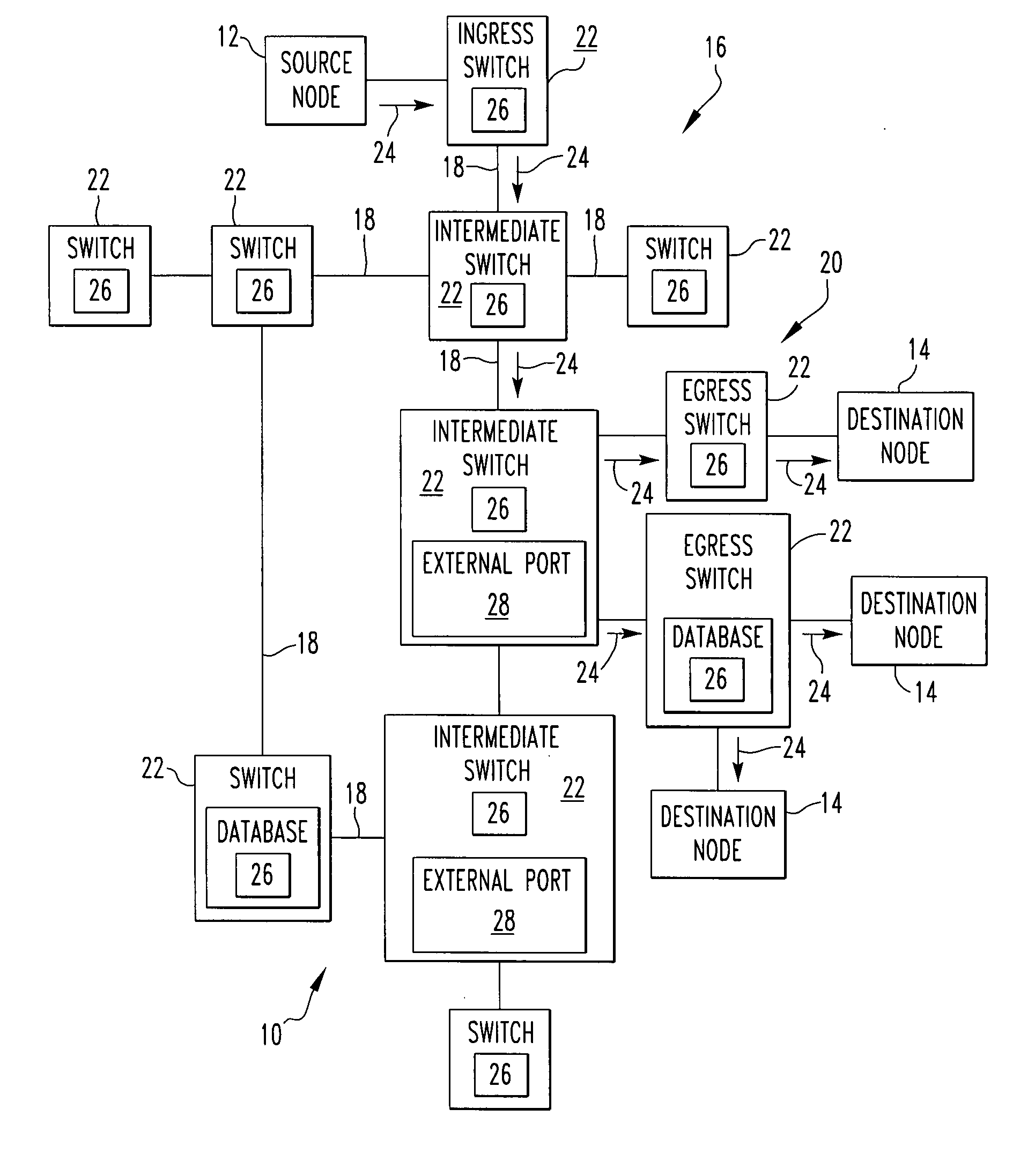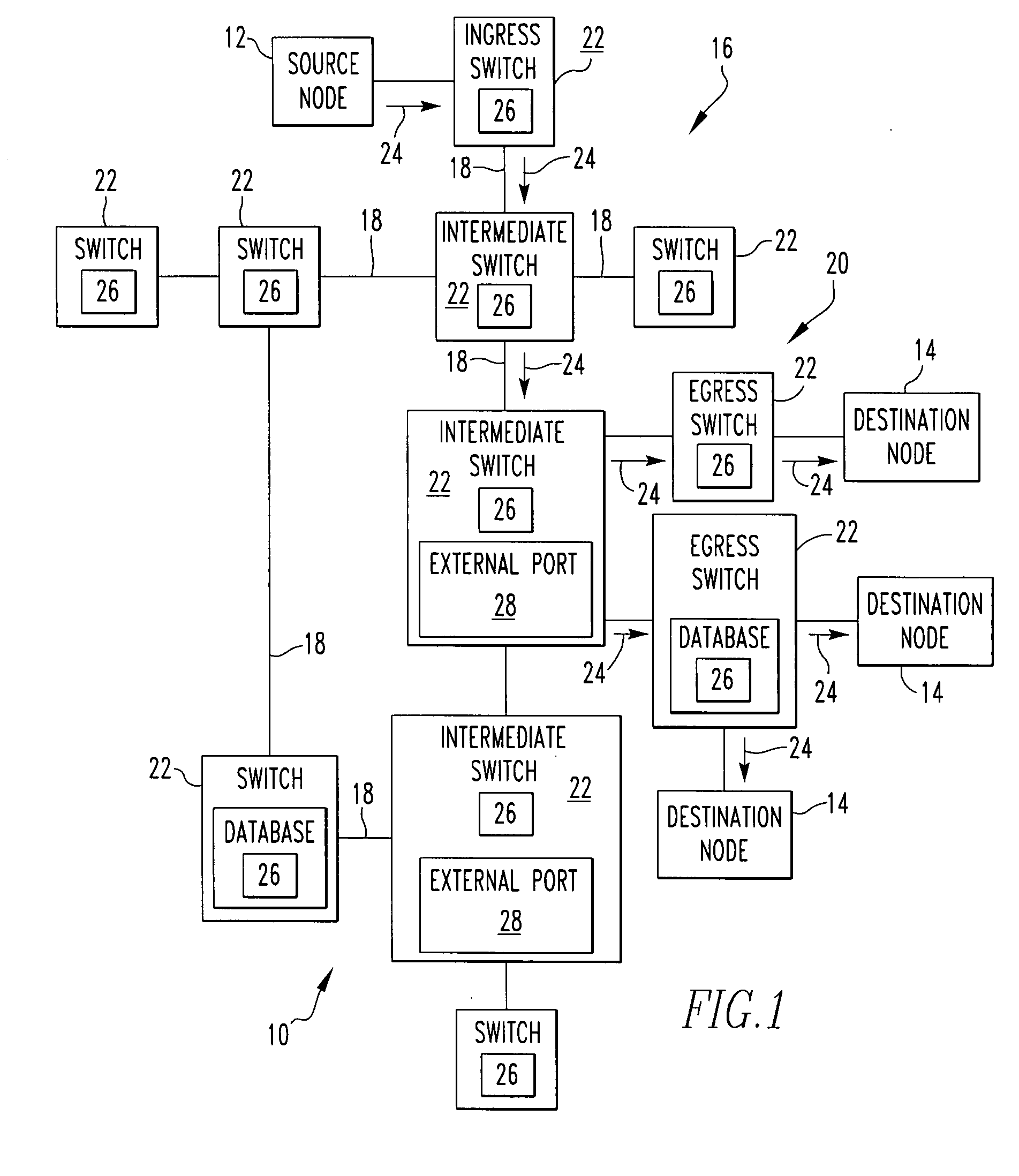Efficient multipoint distribution tree construction for shortest path bridging
- Summary
- Abstract
- Description
- Claims
- Application Information
AI Technical Summary
Benefits of technology
Problems solved by technology
Method used
Image
Examples
Embodiment Construction
[0023]Referring now to the drawings wherein like reference numerals refer to similar or identical parts throughout the several views, and more specifically to FIG. 1 thereof, there is shown a telecommunications system 10. The system 10 comprises a source node 12. The system 10 comprises a plurality of destination nodes 14. The system 10 comprises a network 16 having links 18 and end stations 20. The system 10 comprises a plurality of switches 22 that create paths 24 along links 18 between the source nodes 12 and the destination nodes 14 where there is 100% efficiency along the paths 24 with the paths 24 traversing any link 18 only once to the corresponding destination node 14 from the source node 12, and the path 24 being a shortest path 24 between the source node 12 and the destination node 14, where each switch 22 has a Dijkstra computation complexity of O(N) in regard to forming the shortest paths 24.
[0024]Preferably, the switches 22 deliver frames from the source node 12 to the ...
PUM
 Login to View More
Login to View More Abstract
Description
Claims
Application Information
 Login to View More
Login to View More - R&D
- Intellectual Property
- Life Sciences
- Materials
- Tech Scout
- Unparalleled Data Quality
- Higher Quality Content
- 60% Fewer Hallucinations
Browse by: Latest US Patents, China's latest patents, Technical Efficacy Thesaurus, Application Domain, Technology Topic, Popular Technical Reports.
© 2025 PatSnap. All rights reserved.Legal|Privacy policy|Modern Slavery Act Transparency Statement|Sitemap|About US| Contact US: help@patsnap.com



